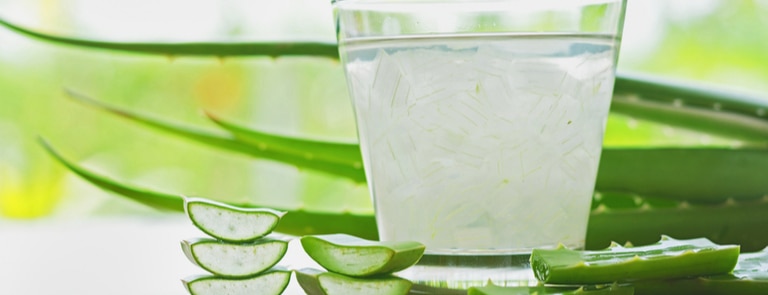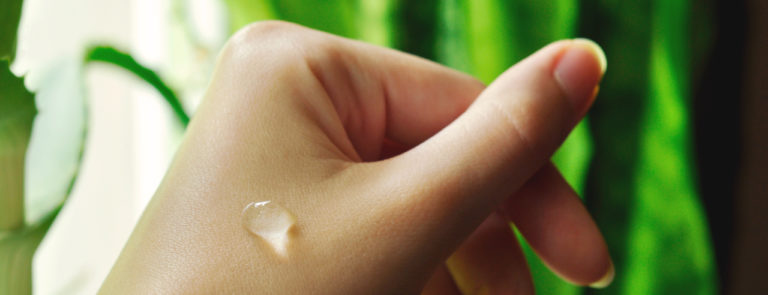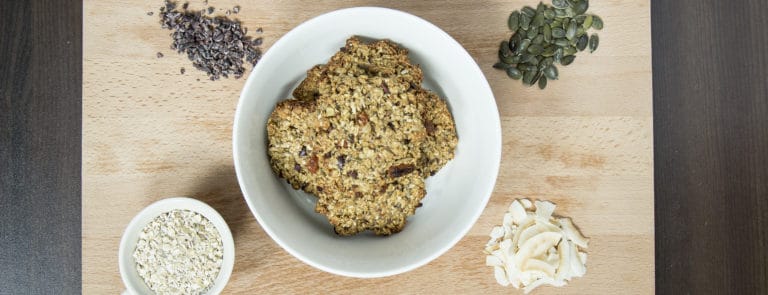10% off £35
What are the benefits of drinking aloe vera juice?

Aloe vera juice is enjoyed across the world as a refreshing beverage.
This cooling herbal drink is gaining popularity as people increasingly prioritise healthier lifestyles.
But what are the benefits of aloe vera juice? Are there any aloe vera juice side effects? How much aloe vera juice is too much to drink each day? And how do you make aloe vera juice? Read on to find out more.
Skip to:
What is aloe vera juice?
Aloe vera juice is available worldwide. It’s usually sold in plastic or glass bottles, and may be in the form of pure aloe vera juice, or as a drink made with aloe vera extracts along with other ingredients which can include other plant extracts, sugar or sweeteners.
Pure aloe vera juice is derived from the spiky green aloe vera plant.
Aloe vera succulent has been used since ancient times as an alternative remedy. For commercial purposes, the aloe vera plant is cultivated in hot climates including India, Mexico, the Dominican Republic, South Africa, China and Costa Rica.1
You’re also likely to see aloe vera plants in UK homes and offices, as they don’t need much water or strong sunlight to thrive.
Inside the spiky aloe vera leaves a firm yet sticky gel which is prized in skincare and alternative remedy. This gel is wrapped in a tough membrane known as the latex and encased in a tough green casing called the rind.2
Find out more about aloe vera including the benefits and dosage here.
How is aloe vera juice made?
Aloe vera juices are made in one of two ways:
-
Whole leaf processing
In this method, the entire aloe vera leaf – incorporating the rind, latex and gel – is ground up and filtered using activated carbon to remove the latex compounds called aloin.
The filtering process is known as ‘decolourisation’ or ‘purification’.
Aloe vera latex is bitter tasting, has harsh laxative effects and may be harmful in large quantities. Removing the aloin protects the consumer against these effects.4
-
Inner leaf processing
With this method, the rind and latex are stripped away before the inner gel is processed into a liquid. Sometimes, the aloe vera gel is also carbon filtered for extra purity (decolourised).
In Europe, pure aloe vera gel destined for use in beverages must have aloin at no higher amount than 0.1 parts per million.5
What does aloe vera juice taste like?
Aloe is derived from the Arabic word alloeh meaning ‘bitter and shiny substance’, which might give you an idea of what it tastes like in its natural form.7
Raw unsweetened aloe vera gel (straight from the leaf) has been described as tasting anywhere from neutral to extremely bitter.
Aloe vera juices that are available commercially taste much better, thanks to additional flavourings such as cranberry and chamomile, or sweeteners.
What are the benefits of aloe vera juice?
Aloe vera juice benefits include:
- It’s full of vitamins
Despite being around 98.5% water, aloe vera is packed with vitamins, minerals and nutrients.8
For example, aloe vera contains vitamin A (beta-carotene) and vitamins C and E, which are antioxidants.
Aloe vera also contains vitamin B12, folic acid, and choline, as well as minerals calcium, chromium, copper, selenium, magnesium, manganese, potassium, sodium and zinc.9
The aloe vera plant also contains minerals, plant sugars and amino acids.
Altogether, aloe vera contains at least 75 active ingredients.10
Drinking aloe is also a great alternative to regular juices. As they are usually packed with added sugars, aloe vera juice provides a more natural, low sugar alternative.
Discover our range of aloe vera juices and tablets here.
Summary
- Aloe vera juice is made from the gel inside the tough, spiky aloe vera plant
- Only decolourised, purified aloe vera juice is safe to drink
- You can buy aloe vera water, juice and fruit drinks with aloe extract, or you could make your own aloe drink
- Buying aloe vera juice drink in the UK assures you that it’s purified and free from aloe latex
9 of the best aloe vera juices
Now that you know all about aloe vera juice's benefits for the body, which is the best aloe drink to try? There are many to choose from, so we've rounded up 9 of the best aloe vera juices.
Aloe vera dosage – how much is safe?
Between 15ml and 50ml aloe vera juice daily is the generally recommended dose. Always read the label as strengths and formulas of commercial aloe vera juice vary.
What are the side effects of drinking aloe vera juice?
Whole-leaf aloe vera extract incudes the latex and the aloin– the plant compound found in aloe vera latex which has strong laxative effects. This is why side effects of drinking aloe vera gel, that hasn’t been decolourised, can include symptoms such as diarrhoea and cramping can occur.12
As commercial aloe vera juice doesn’t contain the aloin – aloe vera juice shouldn’t cause the gastrointestinal side-effects you may get with a whole-leaf aloe vera extract like tablets or capsules.
Drinking aloe vera excessively, for a prolonged period, has been linked to toxic hepatitis in rare cases. 13,14
It’s important to be aware that aloe vera plants may be toxic to cats, dogs and other pets.15
How much aloe vera juice to drink daily?
As long as you’re not experiencing any undesirable side-effects, you can drink decolourised, purified aloe vera juice every day. Never exceed the stated dose.
Summary
- Aloe vera contains plenty of nutrients, including vitamin A (beta-carotene) and vitamins C and E, and active plant phenols
- Non-decolourised aloe vera can cause abdominal cramps and diarrhoea
The advice in this article is for information only and should not replace medical care. Please check with your GP or healthcare professional before trying any supplements, treatments or remedies. Food supplements must not be used as a substitute for a varied and balanced diet and a healthy lifestyle.
Last updated: 1 June 2021
7 benefits of aloe vera for hair and skin
What are the benefits of aloe vera for hair & skin? And what are some of the best aloe vera products out there right now?


- https://www.cbi.eu/market-information/natural-ingredients-health-products/aloe-vera/market-potential
- https://www.ncbi.nlm.nih.gov/pmc/articles/PMC2763764/
- https://www.iasc.org/Portals/19/Documents/Scientific/
- https://www.ncbi.nlm.nih.gov/pmc/articles/PMC6349368/
- https://www.iasc.org/Portals/19/Documents/Scientific/
- https;//deepgreenpermaculture.com/2019/04/16/identifying-and-growing-edible-aloe-vera/
- https://www.ncbi.nlm.nih.gov/pmc/articles/PMC6349368/
- https://www.ncbi.nlm.nih.gov/pmc/articles/PMC2763764/
- https://www.ncbi.nlm.nih.gov/pmc/articles/PMC6349368/
- https://www.ncbi.nlm.nih.gov/pmc/articles/PMC2763764/
- https://www.cbi.eu/market-information/natural-ingredients-health-products/aloe-vera/market-potential
- https://www.ncbi.nlm.nih.gov/pmc/articles/PMC2763764/
- https://pubmed.ncbi.nlm.nih.gov/25073673/
- https://pubmed.ncbi.nlm.nih.gov/18783689/
- https://www.ourhouseplants.com/plants/aloe














